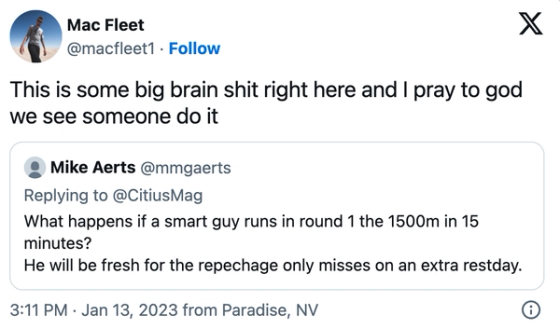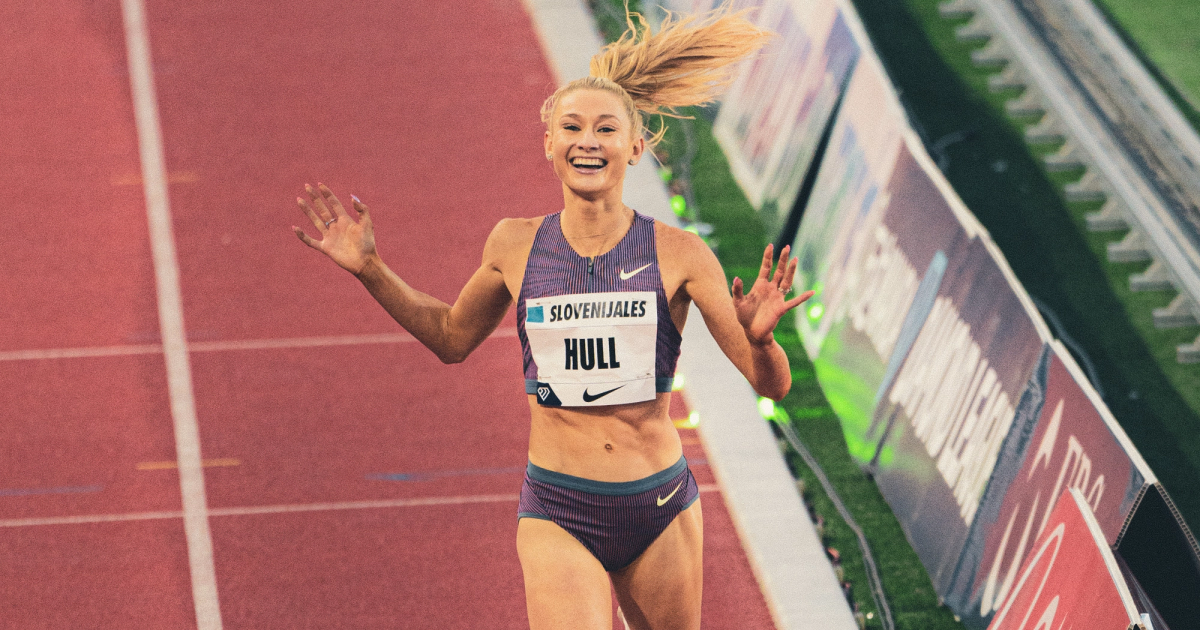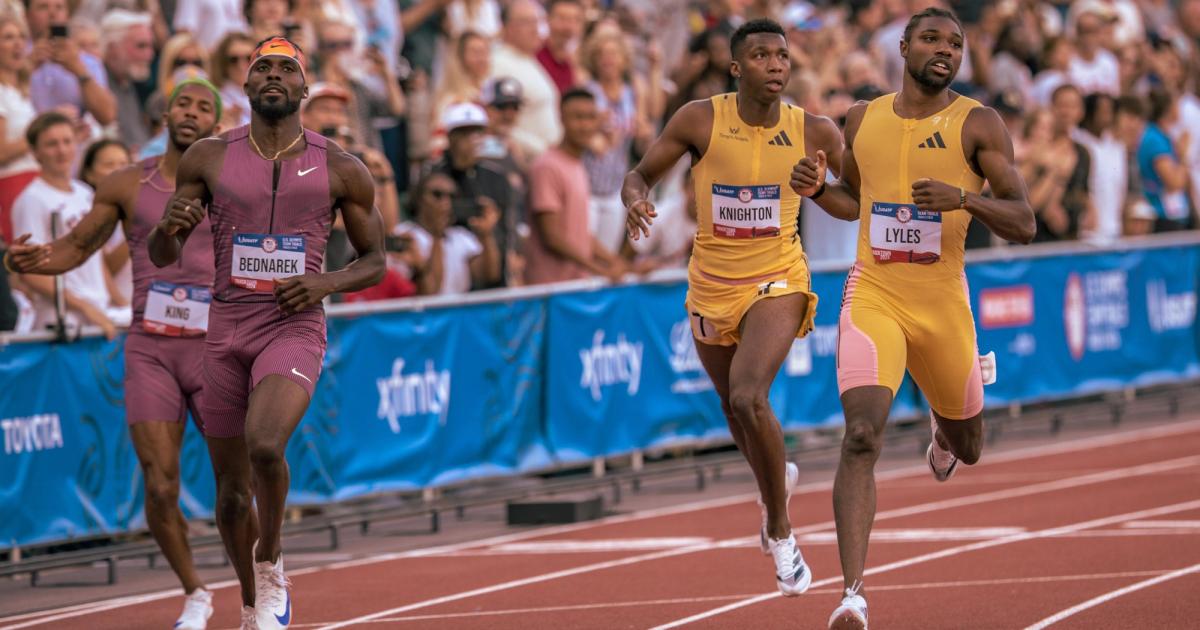By Paul Snyder
July 17, 2024
When the track and field prelims begin on August 2nd, we’ll get our first look at the action on and surrounding the Stade de France’s purple oval. Some will tune in with unblinking eyes glued to the sport’s biggest stars, others will happily clap at their televisions in general appreciation for the roughly 1,800 athletes who have spent the past four years in pursuit of an audacious dream.
But us? We’ll be feverishly refreshing the results page, using string to connect bits of paper thumbtacked to a cluttered bulletin board, determining which competitors will be the unwitting guinea pigs tossed into the first-ever Olympic repechage rounds.
“Repe-what rounds?” you might be yelling directly into your iPad right about now.
First thing’s first, it’s pronounced “reh - puh - SHAAJ.” It’s fittingly French. And it basically means “second chance.”
It’s new to the Olympics this year, and is replacing the small-q time qualifiers for the first round of every event between 200m and 1,500m, including the hurdles. For these races, the top-however-many finishers from each first round heat will advance to the semis automatically (just like before). Those who miss out will race again in the repechage round for an opportunity to line up in the semis – where the top athletes will advance. The semifinals work as they did before, with a mix of automatic and time qualifiers.
Hopefully that makes sense. Regardless of your (or our) understanding of how the repechage round will work, even less clear is why we’re doing it in the first place. Heats have never – and will never – be perfectly fair. Some will always be weaker than others, and with time qualifiers, later heats tend to have an advantage. Ultimately, we just want any good system to answer the question “does this process serve us in determining who is the best in the world at this event?”
With few exceptions, the true medal contenders will skate through the rounds regardless of how those rounds are structured (Editor’s note: In Budapest ‘23, the number of athletes who advanced from the first round to the semis with a time qualifier and went on to make the final was… zero). It’s the fringe athletes – still very much world class, mind you! – who have to worry about not nabbing a time qualifier or getting ducked at the line to secure a spot in the semis.
Of course the sunny spin on repechage is that it will make the rounds way more fun to watch. It should give fans something to cheer for (a scrappy upstart scratching and clawing their way through an additional redemptive heat en route to a career defining final) during what is generally pretty predictable early meet contests.
And then there’s the slim possibility that a comedically-minded athlete commits to the bit, and does something truly wild, as described in this hypothetical from over a year ago that we still think about daily:

But the most reasonable set of takes on the repechage heats is this: They aren’t going to move the needle in terms of outcome at the final. They likely, unfortunately, won’t result in anything super funny. We might get one or two memorable performances – an underdog diving across the finish to make the semis… perfect B-roll fodder for a 2028 Tide commercial. We are guaranteed to get a dozen or so extra races, which rocks. Because dammit, we love track and field.

Paul Snyder
Paul Snyder is the 2009 UIL District 26-5A boys 1600m runner-up. You can follow him on Bluesky @snuder.bsky.social.




